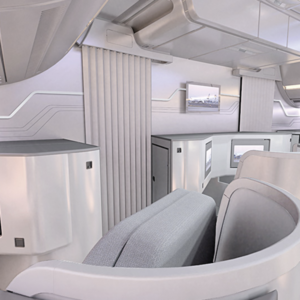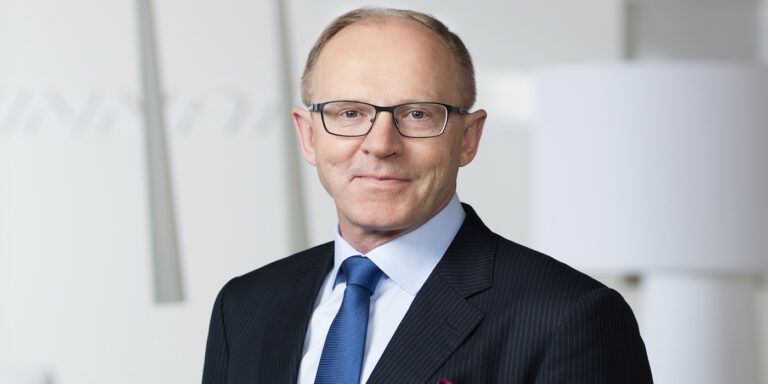On June 4, 2017 Pekka Vauramo, CEO of Finnair, was nominated by the governing board of the Oneworld global airline alliance to serve as its chairman for the next two years. As chairman, Vauramo will chair board meetings, oversee alliance governance and work closely with Oneworld CEO Rob Gurney and the central alliance team.
It’s an important role, so what makes Vauramo tick?
Reducing costs is less likely to create growth for an airline than securing experience. Indeed for Finnair CEO Pekka Vauramo, moving away from an exclusively cost-cutting mentality and developing a strong brand identity has helped the company meet its financial objectives and ensure growth.
“I joined Finnair in June 2013, when we were in the middle of cost-cutting programs. Cost-cutting programs for us meant that we needed to reduce our total operating costs by 10%. The airline was halfway through executing that when I joined in 2013, so we had another 5% to go.
“Very soon after I joined I realized that an airline does not become a great airline just by cutting costs. Of course, I was new in the aviation industry [see below for a short biography] and I was listening to what many external parties such as bankers, analysts and consultants had to say. At times I felt, ‘Can this be right? The valuation of an airline depends only on how big or how extensive a cost-cutting program they have announced?’ I’m not convinced that it can be the one and only way to look at how airlines perform,” Vauramo says.
“Cost-cutting programs were considered more important than how the airline was growing, how it was developing, how it was looking after its customers, or, at the end of the day, how it performed financially, other than in terms of cost reductions. I was fairly confused about this, but we needed to finish the program, which we did at the end of 2014. Then it was time, after so many years of just focusing on cutting costs, to look to the future at what kind of company we want Finnair to be.”
Rediscovering the brand
Raising that question of what kind of airline Finnair should be led on to an internal re-discovery and re-definition of Finnair’s identity, which would ultimately shape the company’s strategy for products and services.

“We engaged our people in our conversation. We kicked off a cultural journey within Finnair and the starting question was ‘What type of company do we all want to work for?'” Vauramo says.
“Elevating the customer experience became a key driver,” he adds. “In my previous business experience, good service has always been a very important element of making money. Nobody likes bad service – it’s a no-brainer.”
Checking out hotels
Vauramo contrasts airline strategy with hotel industry strategy, in terms of building a resilient business.
“The hotel industry has been very successful, compared with aviation. They have not commoditized their product. They have really clearly differentiated the product,” he says. “We have educated our customers that the only thing they should look at when they travel with an airline is the price of the ticket. We have educated them too successfully, I would say. We need to educate the market away from that type of thinking.”
Vauramo also takes inspiration from how global mega-brands define themselves, find their unique qualities and advantages, and build ties to their customer base. “These are the ones we really consider when we are designing our future services,” says Vauramo.
Cultural considerations
For Finnair, a key part of its growth strategy has been to capitalize on Helsinki’s advantageous location as an efficient connector to Asia. But although the airline has hinged its growth on attracting more Asian travelers, it had to decide how to best represent itself in this different cultural context.

“We thought, since we are growing in Asia, perhaps we should become more like an Asian airline in terms of our service. Or should we be a little more American, or European, or should we just be Finns? But we thought that we would not become Asian. We don’t know that culture, even though we have a lot of Asian crew.”
The airline ultimately decided that it wanted to create a feeling of the Nordic region for passengers. As Vauramo says, “This shows in many different elements of what we do. You see it in the light colors in our aircraft and lounges, in our meals – in our entire program. We also like to promote design and products that are made in the Nordics.”
The recently launched A350 has become the signature and the flagship of the airline’s growing fleet, but Vauramo explains that providing a uniquely Nordic experience goes beyond the aircraft type, with the neutral color palette introduced across the fleet allowing Finnair a certain flexibility in terms of design.
“We add colors with elements that we bring in, such as pillows and blankets,” Vauramo says. “The best way to keep cabin interiors fresh is to just change the little things, not the difficult major things.”
Service is key
In the end, however, Vauramo believes that product alone cannot build the brand.
“That’s the hardware side, and anyone can put commercially available hardware on board an aircraft. But what really makes the difference is the customer encounters,” he says.
“The average flight attendant or customer service representative at the airport has on average 20,000 customer encounters per year. That’s a lot. You want to differentiate your service and provide a good experience that makes people come back to you. It’s not acceptable to provide a good experience for 51% of your customers, because then you have failed 49% of them. The rate of success needs to be very high. Therefore, the motivation of our people – and how we treat our people – is a key element of our strategy. We want our people to be there and provide good service and also engage our personnel to create that feeling of a good and positive experience on board the aircraft.”
Keep it simple
Other concerns for Finnair include simplifying the journey through digitalization, and accommodating the needs of an aging population.
“We have so many tourists coming from Asia, Japan especially, to our part of the world. Some of these people may be 80 years old, some 90. These people are used to a very high level of service, and require our services. So we cannot simply rely on digitization,” Vauramo says.

In important ways, Vauramo suggests, making the journey easier on customers can help cut costs.
“We look at what is happening throughout the journey in detail and identify opportunities where we can innovate, and where we can make things easier and reduce passengers’ stress levels. If we can get passengers on board with low stress levels, they are ready to have a pleasant journey. Serving this kind of customer is very different compared with someone who is disappointed or stressed about something that has gone wrong. We all know the level of effort it takes to turn around this kind of customer,” he says.
The bottom line
Vauramo has balanced Finnair between the narrow focus of bankers on cost reductions and the needs of customers for more investment. In this way, he has helped build the top line, ensuring revenue growth. He is keen to emphasize that maintaining cost discipline will continue to be important, but the future demands more.

“Yes, we need to look and make sure that our cost level isn’t too high. But after that we have to grow the top line. The airline business is growing. People are traveling more and more and that’s an opportunity that we have to take,” Vauramo says. “We are growing at around 8% now, and next year we will likely see more than 10% growth at Finnair. That growth opens up many opportunities.”
Pekka profile
Finnair’s board of directors appointed Pekka Vauramo as CEO on June 1, 2013. Vauramo had spent the previous three years based in Hong Kong as COO of the MacGregor marine cargo business division of Cargotec, a Finnish cargo and load handling company. Vauramo served in various positions at Cargotec following his joining in 2007, including head of MacGregor and deputy CEO of Cargotec, as well as head of the Kalmar container handling business unit. Vauramo started his managerial career at Sandvik, a Swedish mining and construction company, where he worked from 1985 to 2007. Vauramo, age 58, holds a MSc degree in mining from Helsinki University of Technology.





